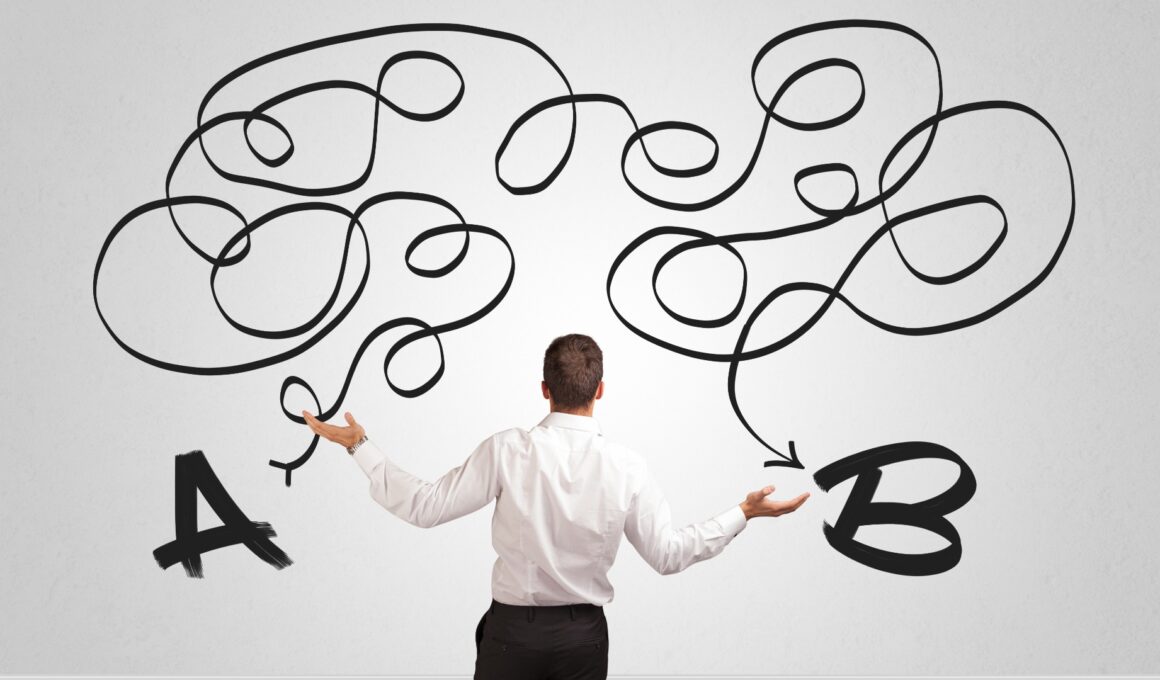Life is full of choices, and indeed at any moment you have thousands of choices you could make. Even for those people who feel trapped and not free in the traditional sense, they could choose right now to deign to do something about their circumstances, to sing a song, or to pour salt on the table (yes I am writing this while looking at a pot of salt… Must… not… pour on table… ). Indeed choice is what life is made of and what gives it purpose and meaning and it’s perhaps the most valuable thing we have as a result.
However there are certain choices in life that take on more importance than others and that have more far reaching consequences – like which degree to do at university, or which person you want to date, or whether or not you should quit your job. These are the kinds of choices that can dictate the path that the whole rest of your life takes, and they’re the sort that come around only every so often. And while these choices are once again what make us free and what make life what it is, they can also be incredibly stressful and upsetting. Making the wrong choice at a time like this could lead of course to cascading circumstances that would could prevent us from living the life we want to, or that could damage our relationships and career prospects.
In fact the art of making the right decisions and picking the right paths is likely a large part of what separates successful people from those who don’t amount to anything. So how do you ensure that you make the right choices in these circumstances and lead your life in the right direction as a consequence? When you really don’t know which path to take, how do you decide which way to turn? Here we will look at some strategies that can help you to make the right choices when it really counts.
Pros and Cons: This might seem like a very simplistic way to resolve life’s big decisions, but sometimes it can really help to make a visualisation of all the things that are in favor of each choice. While different points will have different weightings (it isn’t just a matter of which list is longer) having the lists in front of you can help you to externalise your thoughts somewhat.
Consider All the Factors: When you make this list though, it is only of any use to you if it is exhaustive and in other words it’s crucial that you don’t leave any factors out. Ask yourself then, could your decision affect anyone else other than you? Is there anything you may have forgotten?
Talk it Through: Talking to people about your decisions is of course a great way to help yourself make the right choice. Initially this will enable you to get the opinions of others around you and if everyone is saying the same thing you might give this some serious consideration. However more important is simply having someone to bounce ideas off and to ruminate on the subject with. When you start talking to someone about an issue you will inevitably look at it from different angles and even just hearing yourself speak can help you to straighten out the ideas in your mind.
Counterfactual Simulation: Counterfactual simulation means basically imagining that something is the case and dedicating some time to ‘simulating’ in your mind what life would be like under particular circumstances. So here you might choose to simulate life after making either choice, what would the repercussions likely be? How do you feel? How do you cope with the downsides? And by properly visualizing the scenarios you can learn what they would really be like and what you feel about them.
Flip a Coin: Of course you shouldn’t leave matters in the hands of fate when you are making a very serious decision and flipping a coin isn’t the best way to decide on whether to leave your long term partner for instance. However if you pretend that it *is* how you are going to decide then upon the coin landing you will likely have a rush of emotion – either relief or disappointment and in that moment it can become apparent to you which decision you really wanted to go with.
Blink: This latter point illustrates how our emotions can illuminate our desires and what is best for us, and often these emotions are based on a counterfactual simulation of sorts that runs at an unconscious level. Research has shown that in many case, going with our gut instinct is the right choice and the book ‘Blink’ deals with this subject in detail. So try asking yourself the question quickly and giving the first answer that comes to mind – and perhaps you will then again know what’s in your heart.
Be Objective: Conversely though sometimes what’s actually holding you back is your emotion. In some cases for instance you will get stuck on a decision because you will know what’s best for you deep down, but you will not want that to be the case because you’re afraid or because of a sentimental attachment. To achieve objectivity then, try stepping outside of yourself by imagining that someone else has come to you to talk about the same problem you have – and then think honestly; what advice would you give to them?




